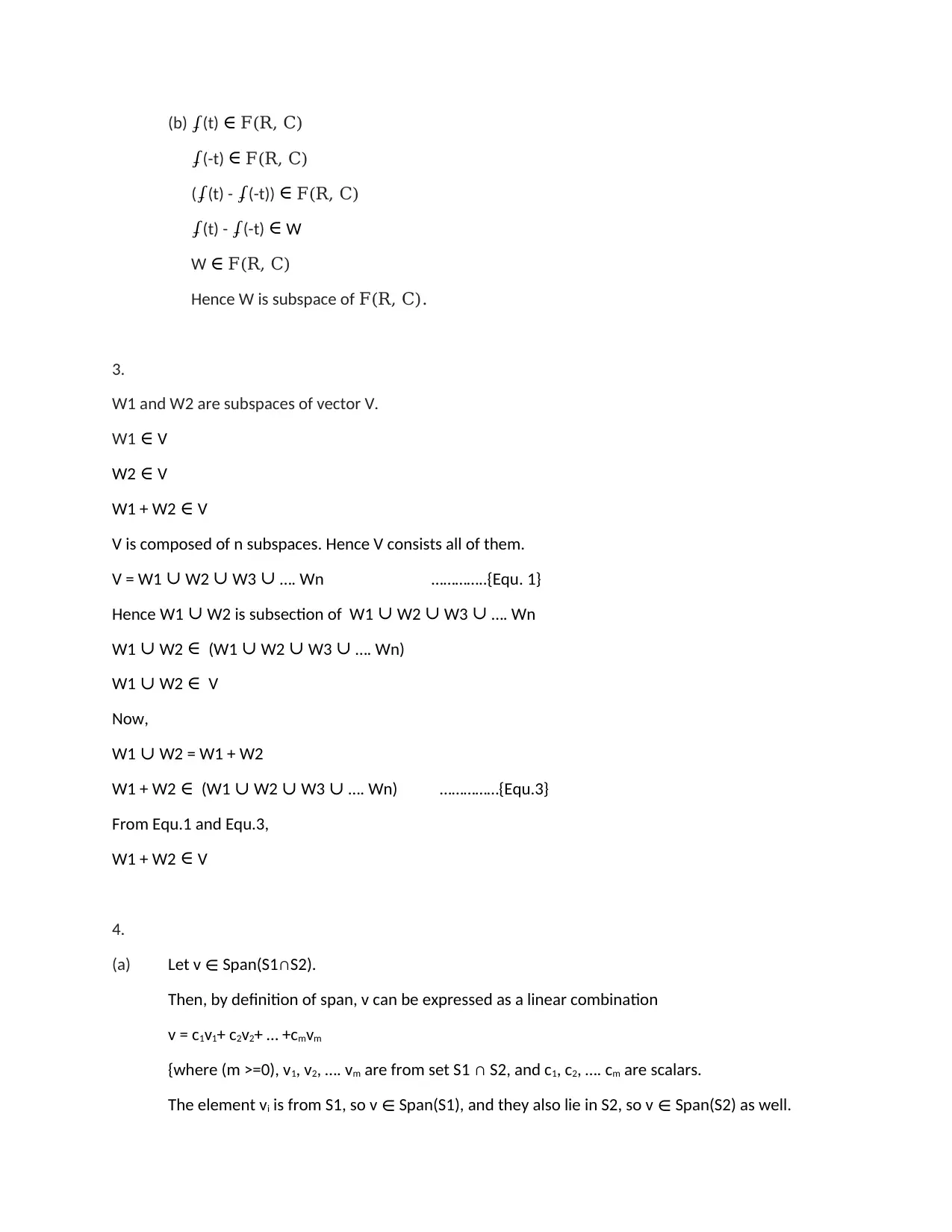Linear Algebra Assignment: Vector Spaces, Subspaces, and Spans
VerifiedAdded on 2023/06/04
|3
|889
|374
Homework Assignment
AI Summary
This document presents a solution to a Linear Algebra assignment, addressing key concepts such as vector spaces, subspaces, and spans. The solution begins by examining whether certain operations on vector components hold true, demonstrating counterexamples where necessary. It then proves that the set of all functions from a set X to a field F constitutes a vector space and establishes that a given set W is a subspace of F(R, C). Furthermore, the solution shows that the sum of two subspaces, W1 and W2, is a subset of the vector space V containing them. It also proves that Span (S1 ∩ S2) is a subset of Span(S1) ∩ Span(S2) and provides examples to illustrate the relationship between them. Finally, the solution addresses the task of finding a subspace U such that P(F) = U + W, where P(F) is the vector space of all polynomials over F and W is a specified subspace.
1 out of 3




![[object Object]](/_next/static/media/star-bottom.7253800d.svg)